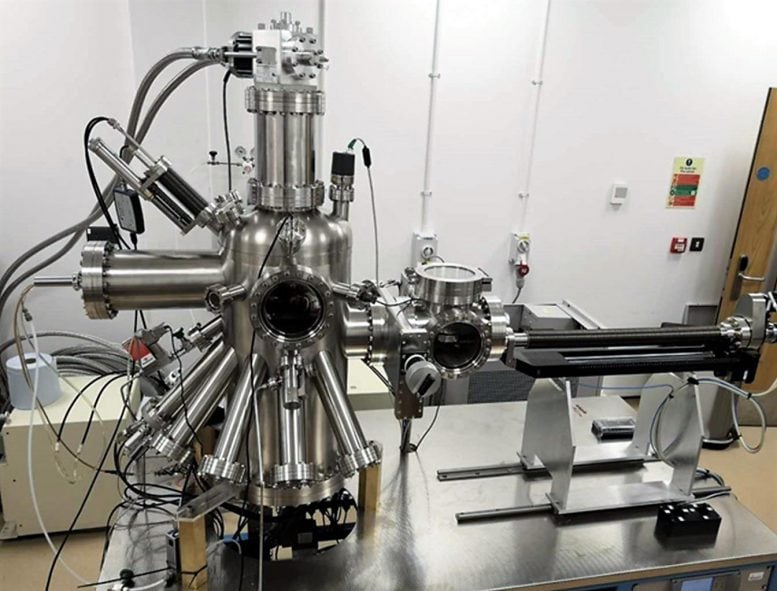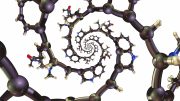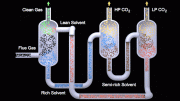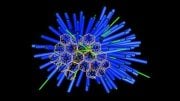
The Matrix Assembly Cluster Source, a newly invented machine which has been used by Swansea University researchers to design a breakthrough water treatment method using a solvent-free approach. Credit: IMPACT/Swansea University
Researchers from Swansea University have developed a new environmentally friendly method for removing toxic chemicals from water.
A newly invented machine, called the Matrix Assembly Cluster Source (MACS), has been used to design a breakthrough water treatment method using a solvent-free approach.
The research, from The Institute for Innovative Materials, Processing and Numerical Technologies (IMPACT) within the College of Engineering at Swansea University, was funded by the EPSRC and led by Professor Richard Palmer.
Professor Richard Palmer explains:
“The harmful organic molecules are destroyed by a powerful oxidizing agent, ozone, which is boosted by a catalyst. Usually such catalysts are manufactured by chemical methods using solvents, which creates another problem — how to deal with the effluents from the manufacturing process?
The Swansea innovation is a newly invented machine that manufactures the catalyst by physical methods, involving no solvent, and therefore no effluent. The new technique is a step change in the approach to water treatment and other catalytic processes.”
Professor Palmer continues:
“Our new approach to making catalysts for water treatments uses a physical process which is a vacuum-based and solvent-free method. The catalyst particles are clusters of silver atoms, made with the newly invented MACS machine.
It solves the long-standing problem of low cluster production rate — meaning, for the first time, it is now possible to produce enough clusters for study at the test-tube level, with the potential to then scale up further to the level of small batch manufacturing and beyond.”
The clusters are approximately 10,000 times smaller than the width of a human hair and have been of significant interest to researchers because of their unique properties. However, due to the inadequate rate of cluster production, research in this area has been limited.
The new MACS method has changed this — it scales up the intensity of the cluster beam to produce enough grams of cluster powder for practical testing. The addition of ozone to the powder then destroys pollutant chemicals from water, in this case, nitrophenol.
On the future potential of this breakthrough technology, Professor Palmer summarizes:
“The MACS approach to the nanoscale design of functional materials opens up completely new horizons across a wide range of disciplines — from physics and chemistry to biology and engineering. Thus, it has the power to enable radical advances in advanced technology — catalysts, biosensors, and materials for renewable energy generation and storage.
It seems highly appropriate that the first practical demonstration of Swansea’s environmentally friendly manufacturing process concerns something we are all concerned about — clean water!”
Reference: “Scale-Up of Cluster Beam Deposition to the Gram Scale with the Matrix Assembly Cluster Source for Heterogeneous Catalysis (Catalytic Ozonation of Nitrophenol in Aqueous Solution)” by Rongsheng Cai, Francesca Martelli, Jerome Vernieres, Stefania Albonetti, Nikolaos Dimitratos, Chedly Tizaoui and Richard E. Palmer, 11 May 2020, Applied Materials and Interfaces.
DOI: 10.1021/acsami.0c05955
The research team includes Dr. Chedly Tizaoui at Swansea, collaborating with Profs Nikos Dimitratos and Stefania Albonetti in Bologna, Italy.
The IMPACT operation is part-funded by the European Regional Development Fund through the Welsh Government and Swansea University.









this is a classic example of a solution seeking a problem. And, of self-appointed / self-important academics who don’t read, don’t know existing technologies and who expand the application of their work far beyond anything practical or needed.
Look up Electro-coagulation and the definition of ‘oxidation’. EC is in use today and handles a large % of organics. (Like a lot of technologies, it struggles with ‘highly soluble transition metals’.) Membrane filtration handles the rest. If there is an application for the technology it would be for onsite, low volume; very specific ultra purity applications. Touting it as ‘enviro’ friendly and implying that has a large application is nothing but an effort for the researchers to feel good about themselves at faculty parties.
A better research topic would be to study the economic benefit of using EC upstream to minimize the use and need for membranes in various industrial waste streams. BTW – EC precipitates are ‘enviro friendly’ as they can be disposed of in landfills. In some cases metals are even being captured. In many industry applications, EC effluent is being recycled in the facility to minimize the need from an incoming source. Minimizing both source needs and effluent volume is the true and most significant eco benefit.
Self-appointed / Self-importance does not help anyone.
Thanks for the post.